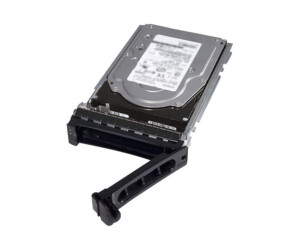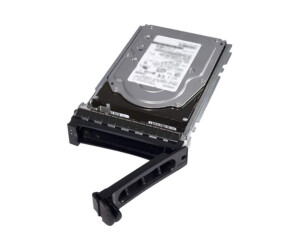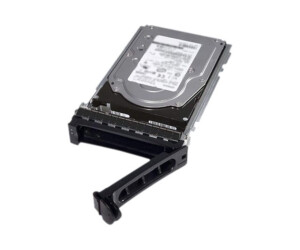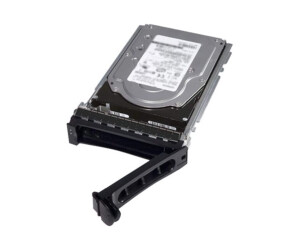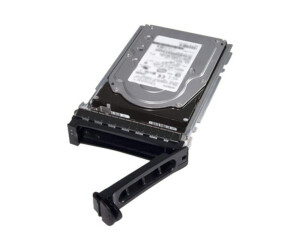Serial Attached SCSI (SAS)
Serial Attached SCSI (SAS)
Serial Attached SCSI (SAS) is a type of hard drive that is widely used in enterprise environments. SAS was developed to meet the requirements for high-performance storage solutions and offers high reliability, scalability, and speed.
A typical SAS hard drive consists of magnetic disks, a read/write head, a motor to spin the disks, and control electronics. The disks are arranged in a closed enclosure similar to SATA hard drives. The read/write head floats just above the surface of the disks, allowing the reading and writing of data through magnetic fields.
The SAS interface consists of a data cable and a power cable, similar to SATA. The data cable transfers data between the hard drive and the host controller or RAID controller. It uses serial connection technology, where the data is transmitted bit by bit. The SAS interface also supports the simultaneous operation of multiple hard drives through a single connection, leading to improved scalability.
SAS offers several advantages over other types of hard drives like SATA. One of the key improvements is the higher data transfer speed. SAS hard drives can transfer data at speeds of up to several gigabits per second, enabling faster performance, particularly in high-data-traffic and demanding applications.
Another advantage of SAS is improved reliability. SAS hard drives use advanced error correction technologies and provide a higher Mean Time Between Failures (MTBF) compared to other types of hard drives. This makes them ideal for enterprise environments where downtime needs to be minimized, and data integrity is crucial.
SAS hard drives also offer better scalability. By using SAS expanders, multiple hard drives can be consolidated into a single storage system, allowing for easy expansion of storage capacity. This is particularly important for companies with growing data needs.
Another advantage of SAS is the support for RAID technologies. SAS hard drives can be used in RAID arrays to improve data security and integrity. RAID allows multiple hard drives to be combined into a logical drive, distributing and redundantly storing data across different drives.
SAS hard drives are also suitable for hot-swap operation, which means they can be replaced while the server is running, without the need to shut down. This enables easy maintenance and minimizes downtime.
However, there are also some disadvantages of SAS hard drives. They are typically more expensive than SATA hard drives, making them less cost-effective, especially for consumer systems. Additionally, SAS hard drives may consume more power and generate more heat due to their higher performance and robustness.
SAS hard drives are a powerful and reliable option for enterprise environments that require high performance, scalability, and data integrity. With their high data transfer speed, advanced error correction technologies, and support for RAID, they provide a solid foundation for demanding applications and large data volumes.
Serial Attached SCSI (SAS) is a type of hard drive that is widely used in enterprise environments. SAS offers a range of advantages and disadvantages:
Advantages of SAS hard drives:
High data transfer speed: SAS hard drives offer higher data transfer speeds compared to other types of hard drives like SATA. They can transfer data at speeds of up to several gigabits per second. This enables faster read and write operations, improving the overall system performance.
High scalability: SAS hard drives support the simultaneous operation of multiple hard drives through a single connection. By using SAS expanders, multiple hard drives can be consolidated into a storage system, allowing for easy expansion of storage capacity. This is particularly important for companies with growing data needs.
- Improved reliability: SAS hard drives are known for their high reliability. They use advanced error correction technologies to minimize data loss and corruption. SAS hard drives also have a higher Mean Time Between Failures (MTBF) compared to other types of hard drives, making them an ideal choice for enterprise environments where downtime needs to be minimized.
Support for RAID technologies: SAS hard drives are compatible with RAID technologies, which provide improved data security and integrity. By using RAID, multiple hard drives can be combined into a logical drive, distributing and redundantly storing data across different drives.
Hot-swap capability: SAS hard drives support hot-swap operation, which means they can be replaced while the server is running without the need for shutdown. This enables easy maintenance and minimizes downtime.
Disadvantages of SAS hard drives:
Higher cost: Compared to SATA hard drives, SAS hard drives are typically more expensive. This can make them less cost-effective, especially for consumer systems or smaller companies with limited budgets.
Higher power consumption and heat generation: Due to their higher performance and robustness, SAS hard drives generally consume more power and generate more heat than SATA hard drives. This can lead to higher operating costs and increased cooling requirements.
More complex configuration: Configuring SAS hard drives may require more expertise and experience, as they are often used in more complex RAID arrays and enterprise environments. This can result in longer setup times and higher administrative overhead.
Limited availability: SAS hard drives may not be as widely available as SATA hard drives and may be harder to find in some retail or consumer environments. This can affect the availability of replacement drives and make maintenance more challenging.
Potential compatibility issues: SAS hard drives use a different connector type than SATA hard drives. Therefore, there may be compatibility issues if older systems or devices do not have the required SAS connector. It is important to ensure that the SAS hard drives are compatible with the system's corresponding interfaces.
SAS hard drives are a powerful option for companies that require high performance, scalability, and reliability. With their high data transfer speed, support for RAID technologies, and hot-swap capability, they provide a solid foundation for demanding applications and large data volumes. However, they are typically more expensive and consume more power than SATA hard drives. The configuration and management of SAS hard drives can also be more complex, and their availability in retail or consumer environments may be limited. It is important to consider the specific requirements of the system and budget constraints to make the best choice between SAS and other types of hard drives.


